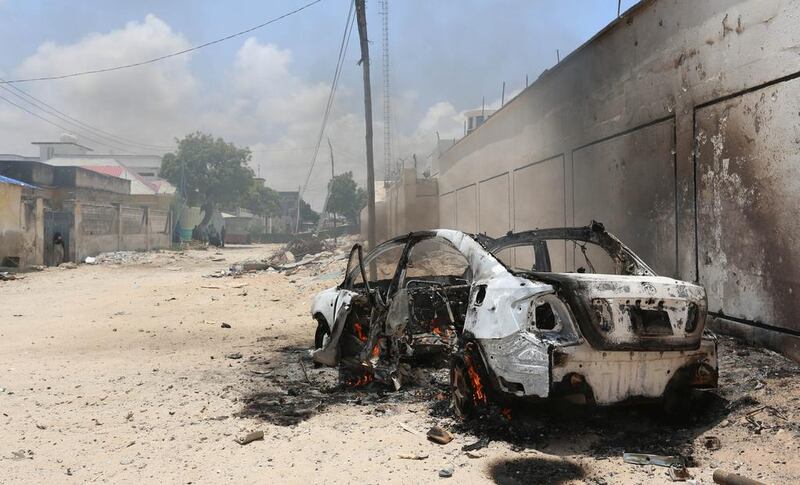NEW YORK // American plans to deploy regular troops to Somalia for the first time since 1993, when 18 special forces died during the Battle of Mogadishu, are the latest sign of Donald Trump’s increasingly muscular stance around the world.
The disaster in the Somali capital — later depicted in the film Black Hawk Down — has long haunted American foreign policy, serving as reminder of the risks involved in military intervention.
But as Mr Trump increases the US footprint around the world, sending troops to Iraq and Syria and ordering an aircraft carrier group closer to North Korea, his administration has also ordered a more aggressive push against Somalia’s Al Shabaab extremists.
A US military spokeswoman said several dozen soldiers from the 101st Airborne Division would train and equip Somalia’s army and African Union forces to better combat the Al Qaeda-linked group.
She offered no further details other than to say: “For operational security issues, we will not discuss specifics of military efforts nor speculate on potential future activities or operations.”
The order is the latest sign of how the new administration is stepping up efforts against violent extremism around the world.
Mr Trump last month signed off on a Pentagon plan to accelerate operations against Al Shabaab, including additional air strikes and covert operations.
It designated parts of the war-torn country as an “area of active hostilities”, allowing US commanders in Africa more latitude to conduct attacks.
Capt Jeff Davis, Pentagon spokesman, said at the time: “The additional support provided by this authority will help deny Al Shabaab safe havens from which it could attack US citizens or US interests in the region.”
For years Mr Trump castigated his predecessors for getting bogged down in foreign wars. But since taking office, the new president has adopted an increasingly interventionist stance.
During the past month he has ordered a missile strike on Syria and entered a stand-off with North Korea over its nuclear programme. In Afghanistan, the US military deployed the biggest non-nuclear bomb ever used in combat to destroy caves used by a local branch of ISIL in Afghanistan.
Somalia offers a daunting challenge. It has been racked by war since 1991. A fragile government depends for its survival on international backing and a 22,000 strong African Union peacekeeping force.
Famine stalks the land once again, with the United Nations warning that as many as six million people are at risk of hunger caused by drought and conflict. At sea, piracy is also on the rise after being termporarily thwarted by an international maritime coalition.
And despite being ousted from Mogadishu in 2011, Al Shabaab remains a potent force and its fighters continue to launch attacks freely. On Sunday, two attackers were shot dead in the capital after launching a mortar strike close to the airport.
Last year the group demonstrated its international threat by trying destroy an airliner. A bomb concealed in a laptop blew a hole in the fuselage of a plane shortly after taking off from Mogadishu. The bomber was killed but the flight landed safely.
Several nations are part of an international effort to assist local forces, including the UK, Turkey and the UAE which in 2015 opened a training centre.
The US has maintained up to 50 advisers and special forces operators on the ground.
However, previous administrations have been reluctant to venture further into a country remembered as the scene of one of its most humiliating defeats in recent history.
Disaster struck when US special forces launched a raid to capture two key lieutenants of a feared warlord.
The operation should have lasted less than an hour. Instead it rapidly spiralled into chaos, as US forces were attacked by militias. Fighters used rocket propelled grenades to shoot down two Black Hawk helicopters and rescue squads came under heavy fire. As many as 3,000 Somalis were wounded during 15 hours of frantic fighting.
Once the killing was over, jubilant crowds dragged the bodies of two dead American soldiers through the streets. It was a humiliating spectacle for the world’s sole superpower and president Bill Clinton ordered the troops home soon after.
For America, those images long served as a dark reminder to presidents that their public would not tolerate the human risks of intervention, while to violent ideologues, such as Osama bin Laden, they were an illustration that even superpowers are vulnerable.
* With additional reporting by Agence France-Presse





